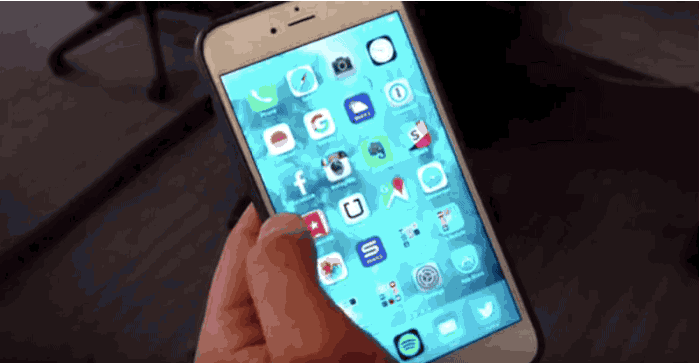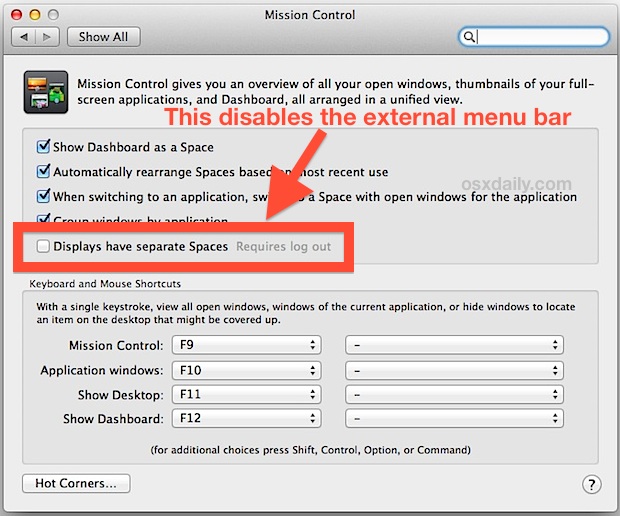One of the best ways to boost productivity on your Mac is to open two apps in split-screen view, so you can work on them side by side. Apple calls this split view, and it’s super easy to use.
Split view on your Mac fills the entire screen by hiding the Dock and the menu bar for distraction-free multitasking. You can use two apps at once—one for each eye!—and get your work done in half the time.
Apr 30, 2017 That might show a bit of the off screen window as the desktop space increases. I have found that you can move the app window if you position the mouse over the edge to get the horizontal or vertical resize arrows. If you have multiple user accounts on your Mac, go to the screen you would use to log in as another user (without logging.
Contents
- 1 How do I see apps in split-screen on my Mac?
- 4 What to do if split-screen isn’t working
- 5 Use window snapping on your Mac instead of split-screen
Related:
How do I see apps in split-screen on my Mac?
Apple gives you a couple of ways to enter split-screen view on your Mac, but you always need to start by opening the individual apps you want to use first.
Mac App Window Off Screen Doors
It doesn’t matter if these are two different apps or two windows from the same app.
After opening the two app windows you want to use at the same time, follow the methods below to use them in split-screen on your Mac.
Option 1. Click and hold the green button
- The top-left corner of every Mac window has a red, yellow, and green button. Click and hold the green button to reveal a drop-down menu.
- From this menu, choose to Tile Window to Left of Screen to resize your window to the left side of your screen. You can also choose to Tile Window to Right of Screen if you prefer.
- You should see all the apps you can use in split-screen appear on the opposite side of the display. Click the other app you want to use to make if fill the other half of the screen.
Option 2. Drag apps together in Mission Control
- Open Mission Control on your Mac. You can do this using the Mission Control button on your keyboard, swiping up with four fingers on your trackpad, or by double-tapping with two fingers on a Magic Mouse.
- Drag and drop the first app window into its own Space at the top of Mission Control, it should go full-screen in that space.
- Now drag and drop the second app window onto the first to enable split-screen. If both apps are in full-screen already, drag one onto the other from the top of Mission Control.
How to see your other apps in split-screen?
Two apps in split-screen view appear in an entirely separate “Space” on your Mac. This is the same thing that happens when you enter full-screen mode. Split-screen even hides the menu bar and the Dock like full-screen mode does to reduce distractions.
Change apps from the split-screen view on your Mac the same way as you would with a full-screen app. Use any of the following methods to do so:
- Hover your mouse at the bottom of the screen to reveal the Dock. Click the app you want to use.
- Press Cmd + Tab to cycle through your open apps. When you release Cmd your Mac changes to that app.
- Open Mission Control to see every Space at the top of the screen. Click the app you want to use to open that Space.
- Swipe left or right with four fingers on the trackpad to switch between adjacent Spaces.
Split-screen on your Mac also lets you change the window width for each app to see the contents better. To do this, click and drag the divider in the middle of the screen. Different apps allow different window widths.
To flip your split-screen apps to the opposite sides, click and drag the toolbar at the top of an app window from left to right, or vice versa. As you drop it onto the opposite side of the screen your apps swap places with each other.
How to turn off split-screen?
Apple gives you a few ways to stop using split-screen on your Mac, depending on whether you want to close an app, go into full-screen, or shrink both windows.
To close a particular app, select it from your split-screen view then close the app as you normally would. You can click the red button in the top-left corner of the window, go to [App Name] > Quit [App] from the menu bar, or press Cmd + Q. When you do so, the remaining app changes to full-screen mode.
You can also switch a single app to full-screen mode without closing the other app. To do this, click the green button in the top-left corner of the window for the app you don’t want to use in full screen. This window returns to your Desktop while the other app changes to full-screen mode.
You can also shrink both apps to your desktop from Mission Control. Hover over the split-screen apps at the top of Mission Control to reveal a circular button with two inward-facing arrows. When you click this, both apps exit split-screen view and return to your Desktop.
What to do if split-screen isn’t working
Like all things, split-screen on a Mac isn’t perfect. It isn’t available for every app, you can’t always adjust the widths the way you want to, and there’s no way to interchange apps within the same split-screen view.
That said, split-screen is still an incredibly useful feature to use on your Mac. And if it isn’t working you should use the following steps to fix it.
Step 1. Update macOS
Apple introduced split-screen on the Mac with OS X El Capitan. If your Mac is running older software than that, you need to update it. You should update your Mac either way to fix software bugs that emerge over time.
Open the Apple menu and go to System Preferences > Software Update to download and install updates on your Mac.
Step 2. Enable separate spaces for Mission Control
Go to System Preferences > Mission Control and check the box next to the Displays have separate Spaces option.
Although seemingly unrelated, this option often causes problems with split-screen on Mac. After checking the box, you need to log out of your Mac to enable the feature. Open the Apple menu to do so.
Step 3. Try different apps
Not every app works in split-screen view on a Mac. And some that do are only available at certain widths. If you can’t get split-screen to work, try using it with different apps instead.
Here are some native macOS apps that should work in split-screen:
- Calendar
- Maps
- Notes
- Numbers
- Pages
- Reminders
- Safari
If these apps work, maybe the other apps you were trying to use aren’t compatible with split-screen. Ask the app developers to find out.
Use window snapping on your Mac instead of split-screen
Split-screen isn’t the only multitasking option available on your Mac. You can also snap windows to different sides of the screen to view them side by side. Although not as sleek as split-screen, window snapping lets you reshape windows how you like without losing the Dock or menu bar.
Mac App Window Off Screen Door
To snap a window to the left or right side of your Mac screen, press Option while you click and hold the green button at the top-left of an app window. The drop-down window that appears should now give you the options to Move Window to different sides of the screen.
When you choose to move your window this way, macOS resizes it to fill the entire left or right side of the screen.
For more window snapping options, consider buying Magnet. This third-party app gives you extra options to snap Mac windows to the left, right, top, bottom, middle, or corners of your screen.

Magnet is one of several useful utility apps to install on your Mac. Other utilities let you improve the copy-paste abilities, search functions, touch gestures, and more.
Dan is a freelance writer based in South West England.
He spent two years supervising repairs as a Genius Admin for Apple Retail and uses that knowledge to keep our troubleshooting guides up to date.
Long before that, Dan turned to Apple products from a musical background. Having owned iPods for years, he bought a MacBook to learn sound recording and production. It was using those skills that he gained a first-class Bachelor of Science in Sound Technology.

Related Posts:
Enter Split View
Split View requires OS X El Capitan or later, and the steps differ slightly based on which macOS you're using. If these steps don't work, choose Apple menu > System Preferences, click Mission Control, and make sure that “Displays have separate Spaces” is selected.
Window Stuck Off Screen Mac
macOS Catalina
- Hover your pointer over the full-screen button in the upper-left corner of a window. Or click and hold the button.
- Choose ”Tile Window to Left of Screen” or ”Tile Window to Right of Screen” from the menu. The window then fills that side of the screen.
- Click a window on the other side of the screen to begin using both windows side by side.
Other macOS versions
Mac Window Resize App
- Click and hold the full-screen button in the upper-left corner of a window.
- As you hold the button, the window shrinks and you can drag it to the left or right side of the screen.
- Release the button, then click a window on the other side of the screen to begin using both windows side by side.
Mac Os X App Window Off Screen
Work in Split View
In Split View, you can use both apps side by side, without the distraction of other apps.
- Choose a window to work in by clicking anywhere in that window.
- Show the menu bar by moving the pointer to the top of the screen.
- Swap window positions by dragging a window to the other side.
- Adjust window width by dragging the vertical line between the windows.
- Switch to other apps or your desktop with Mission Control, or use a Multi-Touch gesture such as swiping left or right with four fingers on your trackpad.
Mac App Window Off Screen Download
Exit Split View
Mac App Window Off Screen Windows 10
- Move the pointer to the top of the screen to reveal the window buttons.
- Click the full-screen button in either window. That window exits Split View.
- The other window switches to full-screen view. You can switch to the full-screen window with Mission Control, or use a Multi-Touch gesture such as swiping left or right with four fingers on your trackpad.